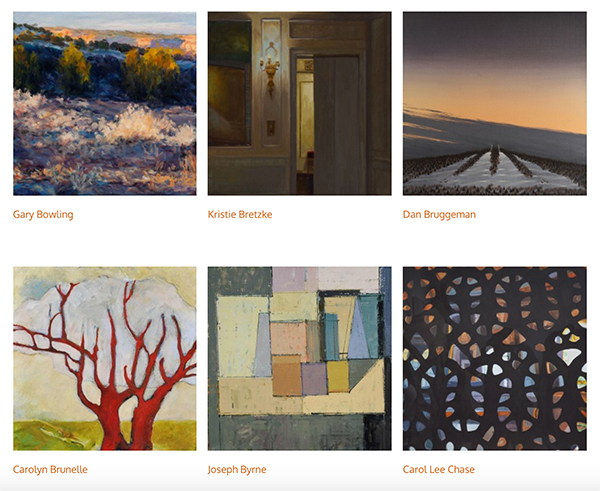PRICING YOUR ARTWORK
For many artists pricing is an emotional issue and they struggle to find a "fair" price. There are many aspects to consider when establishing your prices. Although you don't have to price based on the competition or your costs, you do need to know who and what they are. Let's start to demystify the process.
SURVEY THE COMPETITION
Even though your work is unique you do fall into a category such as: representational vs abstract painter, botanical watercolor artist, landscape photographer, etc. The first step is to acquaint yourself with where artists that sell similar work are marketing their artwork. Hopefully there will be some local galleries, studios, or art fairs that you can visit. All should have a website where you can find out more about where and how they sell their artwork.
You now can start surveying the competition. If you know or a friend knows the artist contact them and ask for advice. You can also ask local galleries what other galleries around the country specialize in the kind of art you create. When you travel always preplan a list of galleries you want to visit. There is nothing like seeing the gallery in person to help you determine if it is a good fit for you.
HOW ARE COMPARABLE ARTISTS PRICING THEIR ARTWORK?
The artists below are represented by the Groveland Gallery. Let's assume this gallery is a good fit for you. Now you can determine the range of prices the gallery is charging. The artists represented below have works on paper that range from $200 - $900 depending on size. The paintings range from $700 - $3200 depending on size. This will give you an idea of what price range your artwork should be priced.

GIVE COLLECTORS PRICING OPTIONS

Michael Banning "Railroad Bridge at West Island Avenue" | 2014 | oil on panel | $3,200.00 image: 21.75 x 36" | frame: 23.75 x 38"
In this example a collector may love the work but can't afford the larger painting. By offering smaller paintings collectors that like your work can still afford to purchase one. Another collector may not be able to afford any of your paintings but could afford to purchase a work on paper.

Michael Banning "Train Cars near the Mississippi River, Minneapolis"
2014 | charcoal | $700.00
image: 10.5 x 18" | frame: 16.25 x 23.15"
By offering multiple options for collectors you broaden the market for your work. You are not lowering your price, you are giving them lower price options.
I can't emphasize enough, if a buyer can't afford to purchase your artwork it doesn't mean that your price is too high and you should lower your price. It just means that you are in a higher part of the market than they can afford.
WHEN DO I RAISE MY PRICES?
Students just starting out will be priced at the lower end of the market. As you become more established you will be able to command higher prices. The time to think about raising your prices is when you are selling consistently or have reached a milestone in your career. When collectors are purchasing your work they are interested in where you have sold your work and what other collectors have been willing to pay for it. They want to make sure that they are paying a "fair" price for your work.
Be cautious about raising your prices when the economy and your sales are slow. At the same time I would be very reluctant to lower your price when the economy goes through one of its inevitable dips because when the economy starts to recover you will have to increase your prices from a much lower base. It will also make your current collectors feel that they over paid for the work they already purchased. Get in the habit of reviewing your pricing once a year and consider 5 - 10% increases depending on your costs, recent sales, and the state of the economy.
PRINTED PRICELISTS
I recently was invited to an open house at a building with multiple artist studios. As we toured the studios not one artist had any pricing next to the artwork on the wall or a printed pricelist. I asked two of the artists the price of a certain work and neither felt comfortable giving me a price. Many potential customers won't ask because they are afraid that the work will be too high and don't want to be embarrassed. After you have done your homework and looked at comparable art by artists in the same stage of their career and established a consistent pricing strategy, then you should publish a pricelist. That will take the guesswork out of the equation and both you and the potential buyer can start talking about the work they are interested in because they have already determined they can afford it.
ONLINE PRICES
It is equally important to have prices online on your website. Many potential customers may be interested in your work but are not going to contact you to ask about your prices. By publishing your prices they know they can afford to purchase your work and can pursue contacting you.
Making your pricing transparent is a critical part of establishing a relationship and trust with your customer base. If you sell directly to collectors from your studio charge the same price as the gallery. Galleries will inevitably find out if you are underpricing them and you will have lost a valuable partner.
If you have multiple galleries it is also important to keep your pricing consistent. Collectors don't want to pay more in Chicago than they do in Minneapolis. If the Minneapolis gallery can't sell your work at the prices they get in Chicago (and the Chicago gallery is selling your work) then you should not let them represent you.
ESTABLISH A CONSISTENT METHOD OF PRICING
Once you establish where you fit into the marketplace having a consistent pricing method makes it much easier to price your artwork.
Many artists price by size. If you work in consistent sizes it is easy to price all of the artwork you do in a certain size the same. If you vary your sizes you can price on a cost/square inch or cost/square foot to be consistent.
For example:
size: 24 x 36
Square feet: 6
Price/sq.foot: $500
Price: $3000
Work under a certain size should just have a set price. Your price/square foot can easily be increased as you increase your sales and work can command higher prices.
KNOW YOUR COSTS
Keeping good records are the key to knowing what your real costs are. At a very basic level you must charge more for your work than it costs you to make. Because you are making custom work each piece is different. But after a while you will be able to determine how much materials are used to make your artwork and approximately how much time it takes you to produce it. And you need to factor in your overhead (rent, utilities, etc.) and enough profit to allow you to continue to make your work. This is especially important and more difficult when you are doing commission work. If your costs are exceeding your selling price you either have to raise your prices or lower your costs. In some cases this might mean experimenting with using different materials. In some cases you might learn a new technique that allows you to complete the work faster. In some cases you may be able to increase your prices without losing any sales.
COST CALCULATIONS
Let's assume that you can make 10 paintings in a month. That the material costs are $300.00 and you spent 160 hours producing them. You are charging your time at $25.00/hour. Your rent, utitlities, and other overhead expenses are: $1500.00.
material costs: $300
labor costs: 160 hours X $25.00 = $4000
overhead: $1500
total cost: $6800
# paintings: 10
Cost: $680.00/painting
You don't need to base your pricing on this but you now know the minimum you need to sell to cover your costs.
It is essential that you continuously monitor your sales to make sure you are exceeding the breakeven point. All sales above the breakeven point provide you with additional profit. If you are selling above the breakeven point it means you are beginning to get established and can consider raising your prices. This is an important pricing strategy to build your reputation and the overall value of your work to collectors.
If you have done a comparison of comparable art in the marketplace and they are being sold at a higher price than the $680, then price your product accordingly. For instance if the going price is $1000, you would only need to sell 7 pictures to hit the breakeven point.
HOW PROLIFIC ARE YOU?
Some artists can produce a large quantity of work quickly. Some artists take months to produce one painting. If you can produce a larger quantity of high quality work you will have more flexibility in pricing. The smaller your output the higher your prices need to be in order to make a living.
